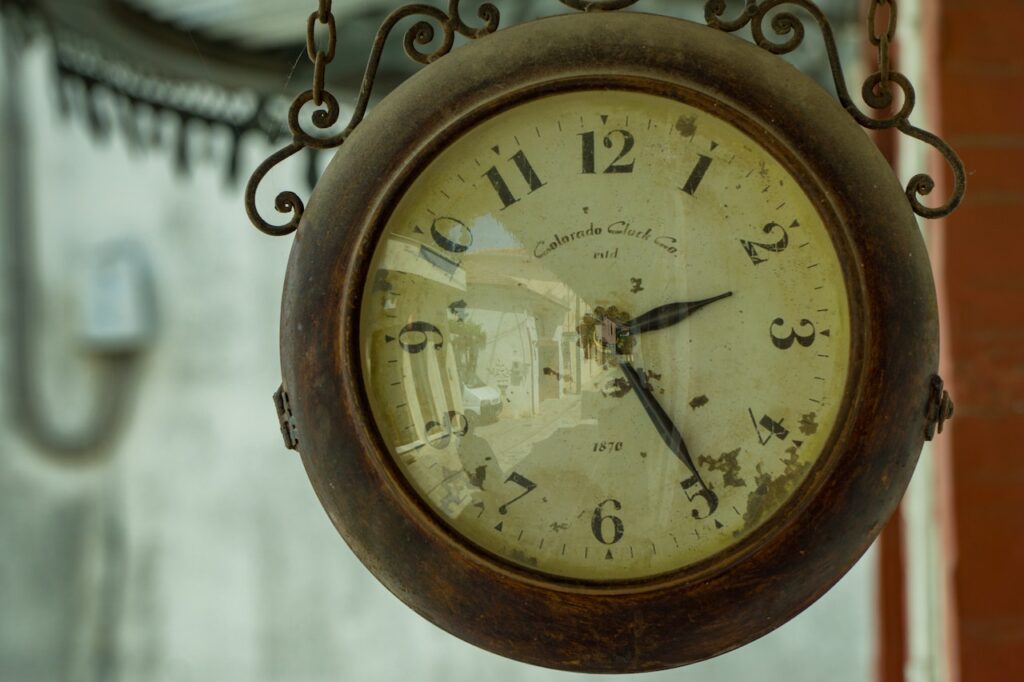Kate Chopin’s (1850-1904) short story “The Story of an Hour” narrates events that happen within an hour.
Louise Mallard is a young, calm, and frail woman who suffers from a heart disease. On this day, Louise learns from her sister Josephine and a family friend, Richards, that her husband, Brently Mallard, has died. She briefly weeps in Josephine’s arms and then heads to her room alone.
While watching the street from her window, she feels an unknown feeling building up and when she gives in to this, Louise realizes that it is the joy of being free from her husband’s constant impositions on her life. The primary character then begins to envision an exciting future and imagines a life where she will live for herself.
However, these feelings of joy and freedom are short-lived. As Louise walks down the stairs from her room, Brently walks into the house and she learns that her husband did not perish in the accident. Mrs. Mallard dies on the spot and the doctor rules that she died of joy. However, with the knowledge of her previous joy, it’s clear that her death is from the disappointment of losing the full free life she had envisioned.
Let’s look at an analysis of the plot, main themes, characters, setting, and other minor literary devices in “The Story of an Hour” by Kate Chopin
The Story of an Hour Plot Analysis
“The Story of an Hour” by Kate Chopin has a linear or traditional plot structure with an introduction, rising action, climax, falling action, and a resolution at the end.
The very first line serves as an introduction or exposition to the plot. Chopin states that Mrs. Mallard “is afflicted with a heart trouble.” This point sets up the rest of the events to come in the story, while it also introduces Mrs. Mallard’s signature trait. Her heart condition also creates a meek perception of her and explains why the other characters have to take great care when telling her sensitive information. The exposition continues with news of Mr. Mallard’s death. Knowing Mrs. Mallard’s frail heart, Josephine breaks the news with care and “veiled hints that revealed in half concealing”.
A rising action begins in the next part of the story regarding how Mrs. Mallard takes in the news of her husband’s death. It’s expected that a woman learning that her husband just died would take the news with disbelief, loud wailing, or any reaction contrary to Mrs. Mallard. Instead, Chopin explains that Mrs. Mallard “wept at once, with sudden, wild abandonment, in her sister’s arms.” She then goes into her room, supposedly to mourn her husband.
The story comes to a climax when Louise experiences a feeling that’s contrary to the sadness of losing a husband. She realizes and revels in her newfound freedom thinking, “There would be no one to live for during those coming years; she would live for herself. There would be no powerful will bending hers in that blind persistence with which men and women believe they have a right to impose a private will upon a fellow-creature”
“‘Free! Body and soul free!’ she kept whispering.”
After this, a falling action starts with Mrs.Mallard giving in to her sister’s incessant requests and opening her room’s door. Together, they descend the stairs, with Louise feeling victorious and triumphant over her new life. The story finally concludes with a resolution as Brently Mallard enters the room, revealing that he did not die in the railroad accident. Mrs. Mallard dies not because of the joy of her husband’s return, but because of the disappointment as her envisioned life of freedom flashes before her eyes.
Themes in The Story of an Hour by Kate Chopin
Love and marriage as inherent issues is one of the themes this short story presents. The presence of love is not synonymous with a good marriage, as suggested throughout the plot.
Love and Marriage
Mr. and Mrs. Mallard love each other, and Chopin ensures we know this several times. While welcoming the freedom ahead of her, she still feels bad about her husband’s death because nevertheless, he was a kind man who loved her. “She knew that she would weep again when she saw the kind, tender hands folded in death; the face that had never looked save with love upon her, fixed and gray and dead”
Louise also admits that she loves Brently, but not all the time. Most of the time she doesn’t. Despite this, she still perceives her husband’s death as a good thing and a gateway to freedom. It’s almost as if she has just been freed from an oppressive situation.
Note that Mrs. Mallard does not state specifically any specific thing that happens during their marriage to change her feelings towards her husband. She instead rants on how marriage is will-bending, with men and women feeling the need to impose their will on others. In his analysis of the author’s works, Kate Chopin’s Life and Personal Influence, Jasdomin Tolentino affirms that Chopin grew up in an environment where women were always taught “to think independently, but also to be submissive to men.” This is reflected in the story as Mrs. Mallard rejoices in her newfound freedom and independence.
Elaine Fortin in her 2014 essay Early Nineteenth Century Attitudes Toward Women and Their Roles as Represented By Literature Popular in Worcester, Massachusetts adds on this forced submission; “Submissive wives, who followed the, advice not to retort an abusive husband, received praise and were supposedly rewarded with a happy home and a faithful husband.” Chopin describes Mrs. Mallard with a “calm face, whose lines bespoke repression and even a certain strength.” Men, and the patriarchal society at large, repressed a woman’s need for individuality and independence, not even the strong could survive.
Gender Roles and Gender Inequality
Like most feminist literature published around this time (1894), “The Story of an Hour” covers gender roles and gender inequality heavily as themes too.
In the 19th and early 20th centuries, women got the brunt of gender inequality, as society perceived them as inferior to men. They were expected to always depend on their husbands or other male figures in the society like fathers or brothers, as Fortin describes in her literature review above. Domestic roles, including accommodating their husbands through cleaning and cooking, were among a woman’s primary responsibilities. And for those who managed to break these barriers, employment was characterized by lower wages with equal responsibilities, as well as gender discrimination at the workplace. Most women did not seek employment because they lived under their husband’s impositions, including the patriarchal perception that women should stay and tend to the home as men go out and become breadwinners. Fortin also adds that the women had little to no financial independence because everything either belonged to their husbands or fathers.
In The Story of an Hour, Mrs. Mallard is an ideal representation of a woman in the 19th century who is in search of lost identity and only feels she can achieve this in the absence of her husband. Of interest in the story is that it is only through a husband’s death that a woman during this time would grasp the taste of independence and freedom because then, she’s not living in the shadows of a man. Therefore, despite the sad news and her grief, Mrs. Mallard cannot help but feel happy because life is about to change for the best: she’s finally free. A majority of women did not have the slightest clue about independence and when Louise finally realizes that she is about to live life on her own terms, she’s in utter disbelief.
“She was beginning to recognize this thing that was approaching to possess her, and she was striving to beat it back with her will.”
It is also important to note that Chopin does not refer to Louise by her own name, but that of her husband, until later when we learn of her newfound freedom. In other words, Louise only finds her identity and independence after Brently dies because women in the 19th century had to identify with a male figure.
From a feminist literature lens, The Story of an Hour falls under the first wave of feminism, when the movement heavily criticized the power of the patriarchal society and the effects it had on women, especially in marriage. An example is married women whose desires and identities were repressed to fit and serve men.
Character Analysis
The story uses both direct and indirect characterization techniques to develop its four characters. Chopin uses a lot of direct characterization of Mrs.Mallard, while she leaves the audience to deduce the traits of the other three characters through indirect characterization.
Mrs. Mallard is the primary character and protagonist. The story begins with details about her heart problem, casting her as fragile and setting the pace for the entire plot. “Knowing that Mrs. Mallard was afflicted with a heart trouble, great care was taken to break to her as gently as possible the news of her husband’s death.” Because of this, Josephine and Richards are careful when breaking the news of Brently’s death. It’s the same reason Josephine worries about Louise’s health when she locks herself in her room.
“Louise, open the door! I beg; open the door–you will make yourself ill. What are you doing, Louise? For heaven’s sake open the door.”
The two worry that the news of her husband’s death would affect her while ironically, it’s the news of his survival that kills her.
Chopin further characterizes Mrs. Mallard as physically weak and mentally exhausted; traits that bolster the issue of repression painted in the story.
“…she was striving to beat it back with her will–as powerless as her two white slender hands would have been.”
It’s also evident in several instances that Mrs. Mallard feels exhausted with life, so much that, “It was only yesterday she had thought with a shudder that life might be long.” This exhaustion seems to stem from her marriage which has made her a repressed, dutiful, and submissive wife.
As she sits to process Brently’s death in her room, there’s “a physical exhaustion that haunted her body and seemed to reach into her soul.” Notice how this perception of her changes when she opens the door and descends the door to welcome and live her new free life. There’s “a feverish triumph in her eyes, and she carried herself unwittingly like a goddess of Victory.”
Although there’s no direct characterization of Brently, we can deduce a few things from Mrs.Mallard’s thoughts and actions. Given her perception of marriage, including hers, her husband shares the same societal and patriarchal expectations of women during that period. She marvels, “There would be no one to live for during those coming years; … that blind persistence with which men and women believe they have a right to impose a private will upon a fellow-creature.”
And yet, Mrs. Mallard knows that her husband loved her. She “ knew that she would weep again when she saw the kind, tender hands folded in death; the face that had never looked save with love upon her.”
The Story of an Hour Setting Analysis
The entire story takes place in Mrs. Mallard’s storied house. Spring season is just starting as the trees come to life and “patches of blue sky showing here and there.”
Spring comes after winter; the cold, lifeless, gloomy, and repressed season. Spring is like a rebirth with its warm weather, as trees grow new life and nature becomes vibrant again. This setting is parallel with what’s happening in Mrs. Mallard’s life. After years of repression in a marriage to someone she doesn’t love, she’s finally free. Life suddenly feels vast and she longs for the life ahead of her, a life she’ll spend living off her own will.
The two rooms where the story’s 60-minutes events take place both represent Louise’s different experiences that all shape the plot. The living room is where she learns about Brently’s death and also where she dies after learning of her husband’s return/survival. It’s a place where cannot be herself and is always under her husband’s will. Even in the end, the doctors conclude that she dies from the happiness of seeing her husband alive, while the true reason is that she has gained and lost her free will in less than an hour.
Mrs. Mallard’s room, on the other hand, is a setting that allows her to be herself, feel her true emotions, and envision a life of freedom.
Symbolism and Motifs in The Story of an Hour by Kate Chopin
Several objects in the story signify the freedom and rebirth Louise experiences, at least for a few minutes. Besides the setting discussed above, Chopin tactfully includes other instances of symbolism to signify Mrs. Mallard’s new life that promises “Spring days, and summer days, and all sorts of days that would be her own.”
The open window with the view before her house has a view of things like trees filled with new spring life, patches of the blue sky amidst clouds, birds chirping, a distant note of someone singing, and so on. All these are signs of something coming to life. She’s embracing and welcoming her new life without Brently, “drinking in a very elixir of life through that open window.” These images and symbols of springtime also double as motifs that reinforce the new great life Mrs.Mallard envisions.
Stuck on your literary analysis essay, book review, or summary? Get an original, customized, and 100% human-written academic essay from an avid reader. Get in touch with me to learn how I can help you!




this was really helpful, thankyou <3
I am really glad this was helpful! 🙂